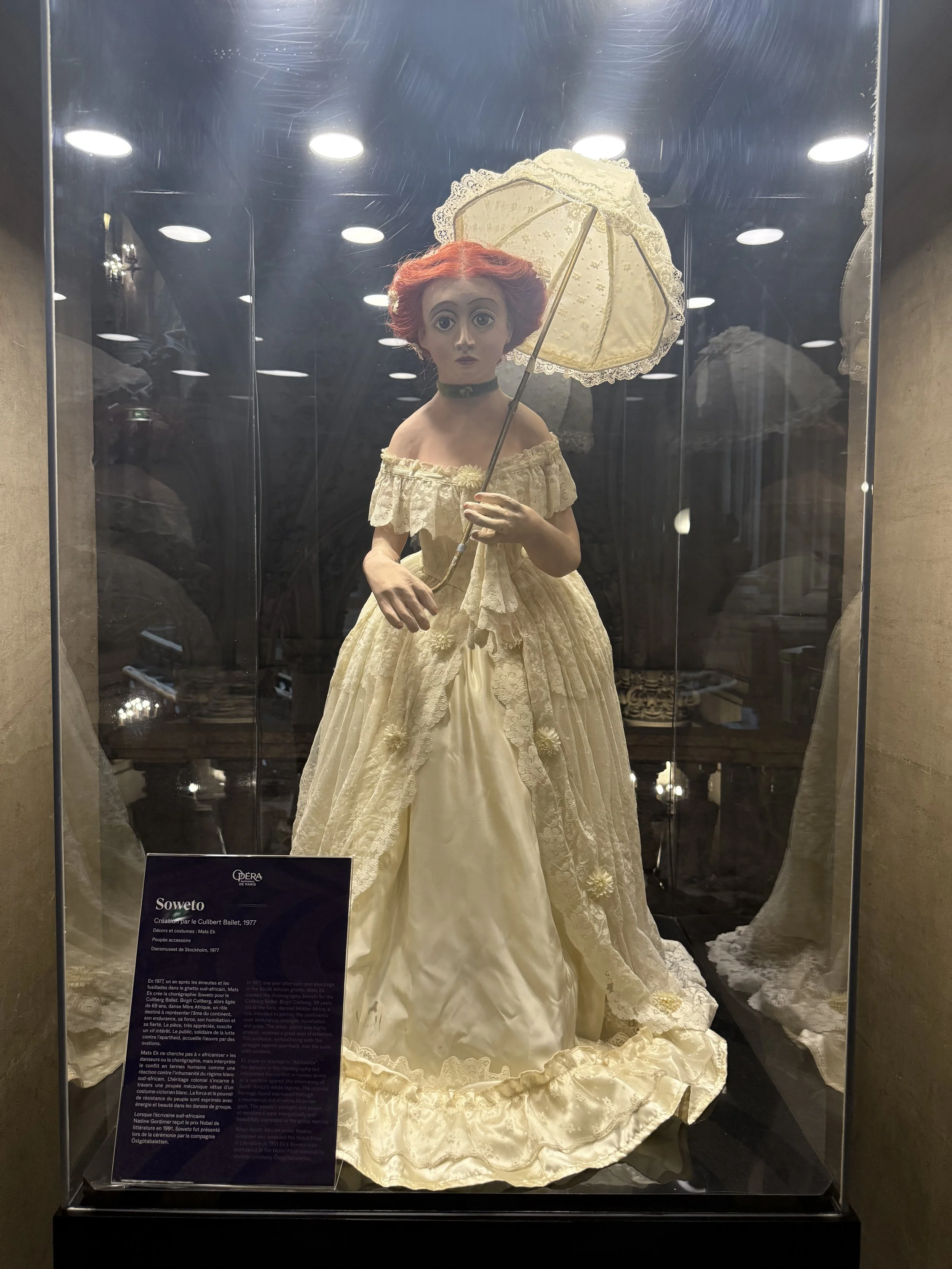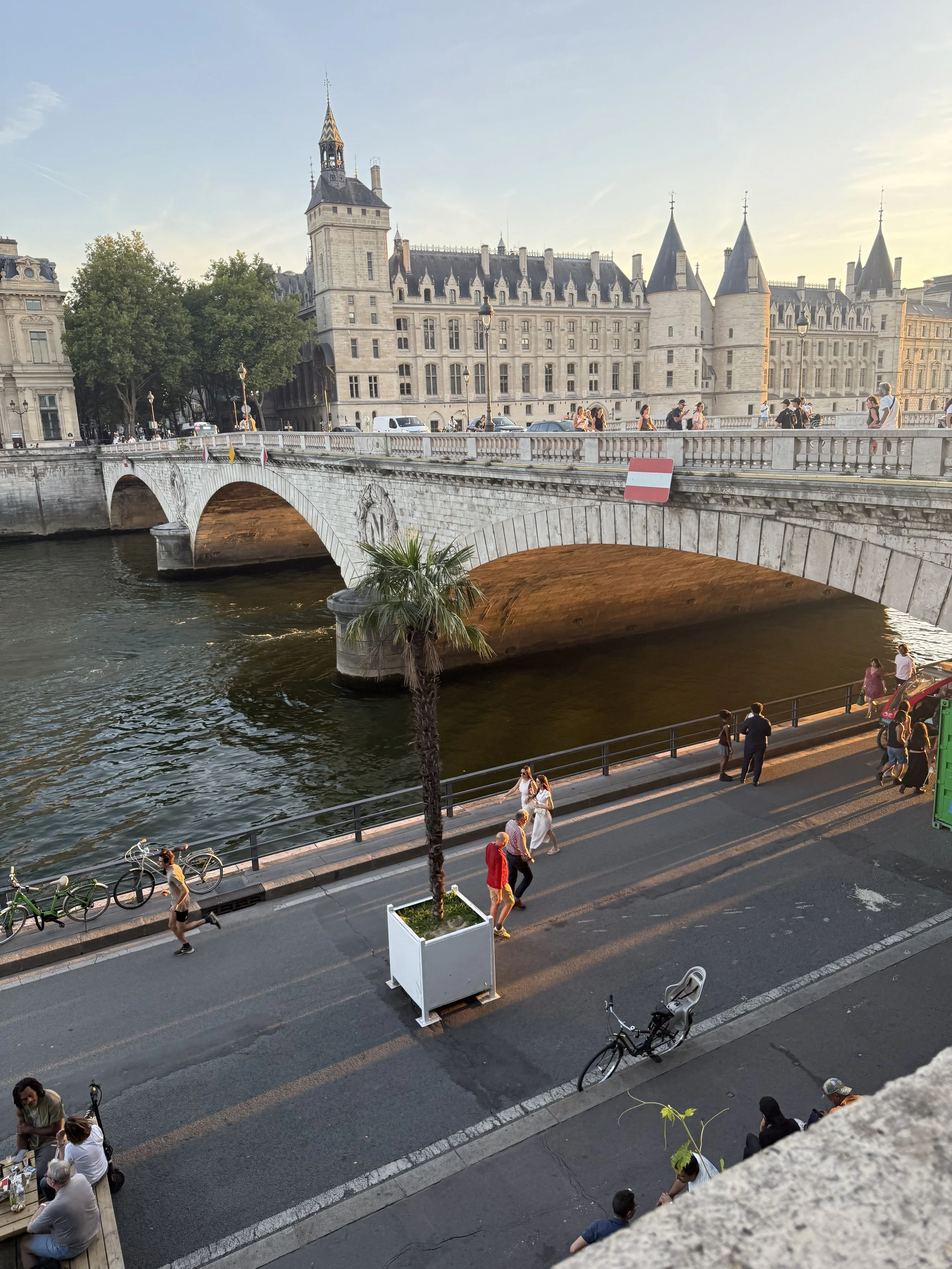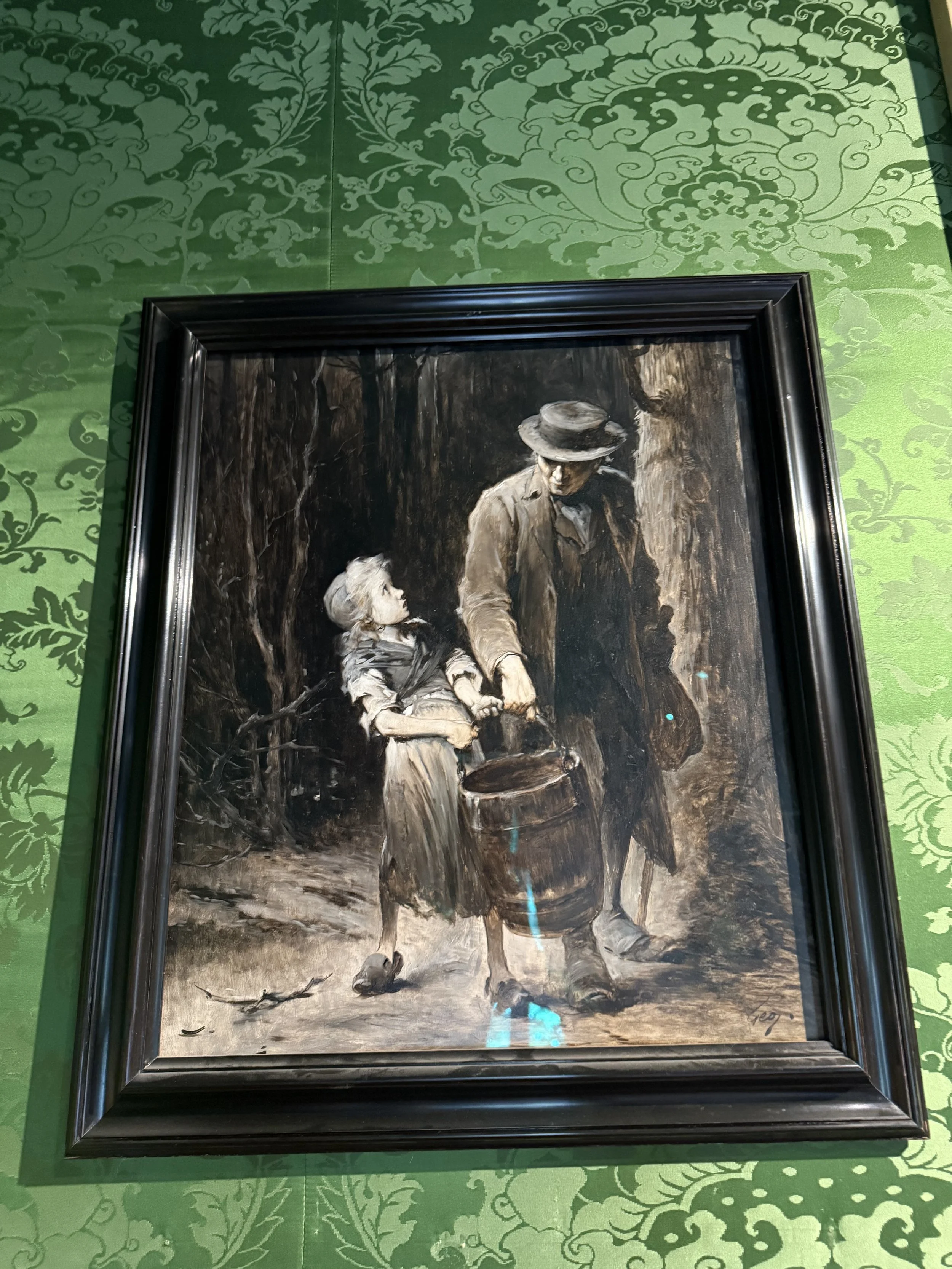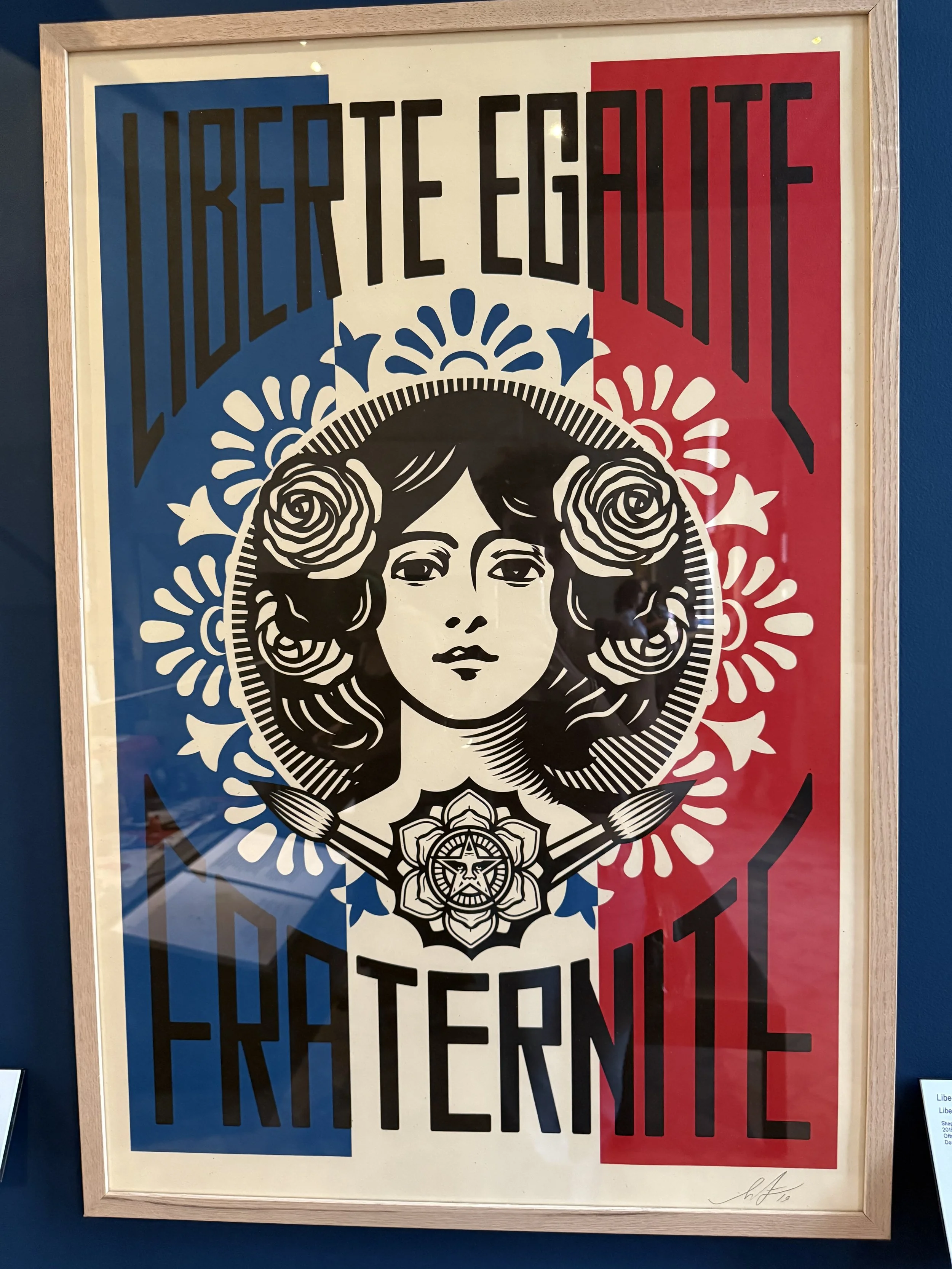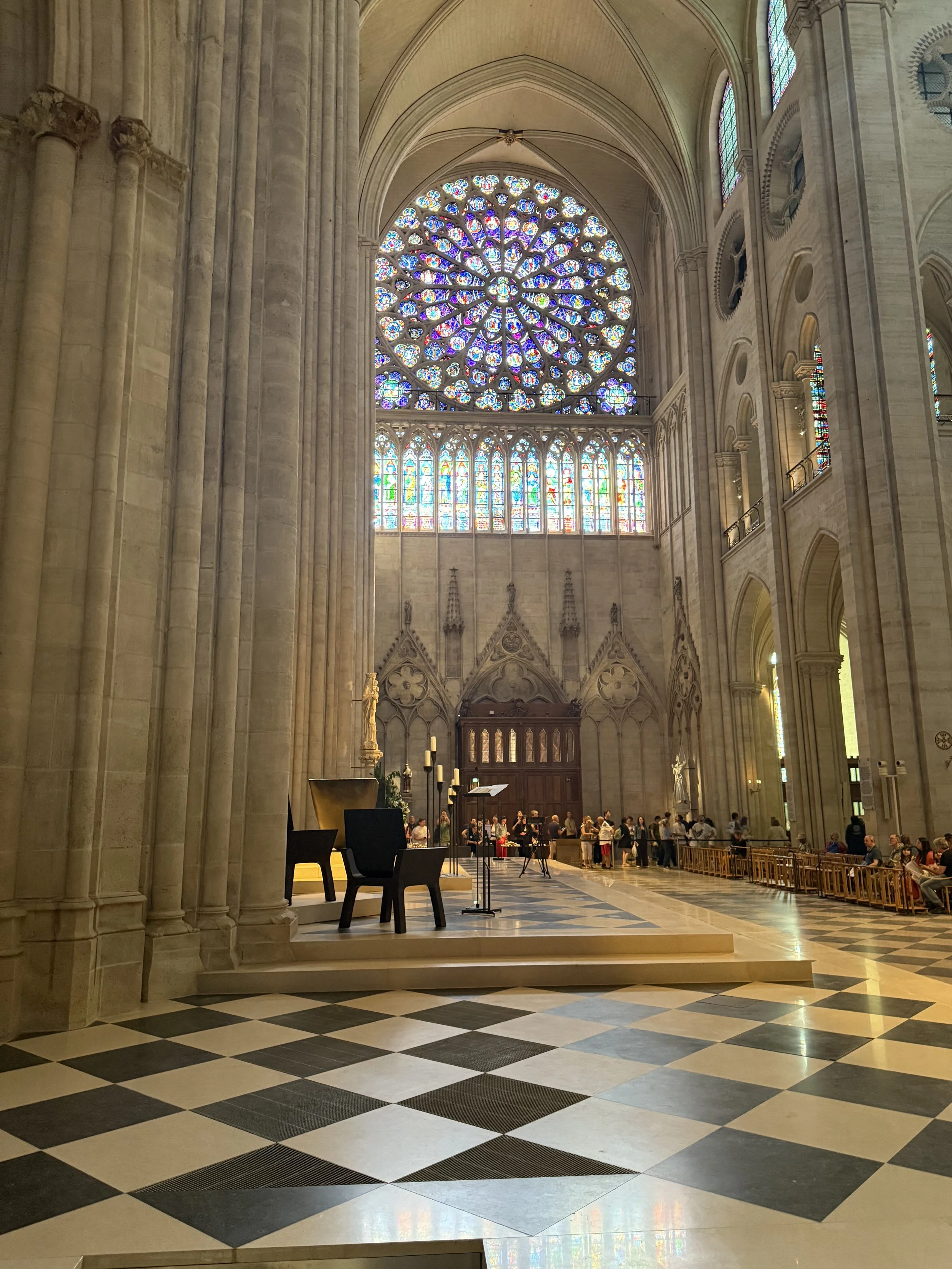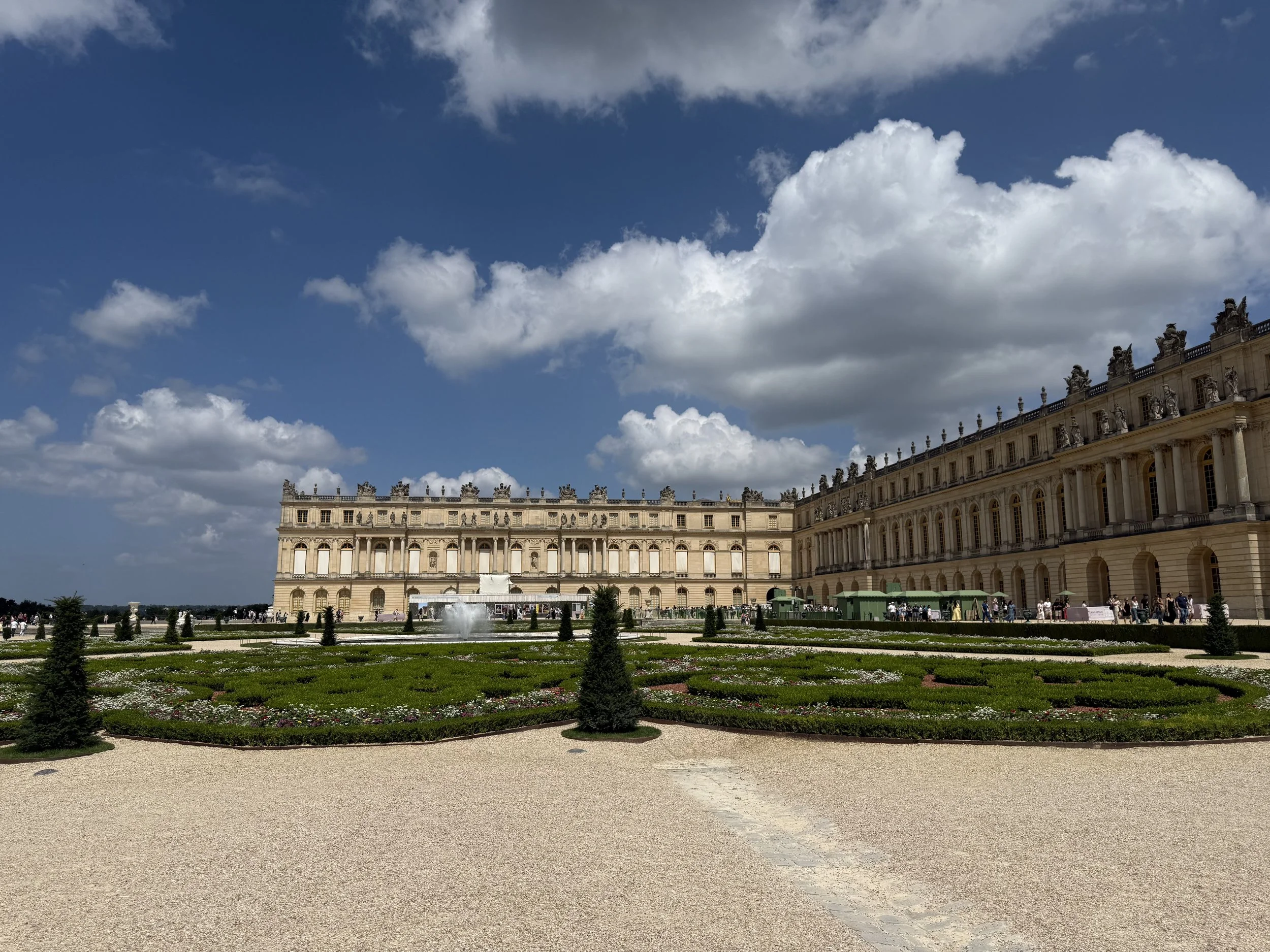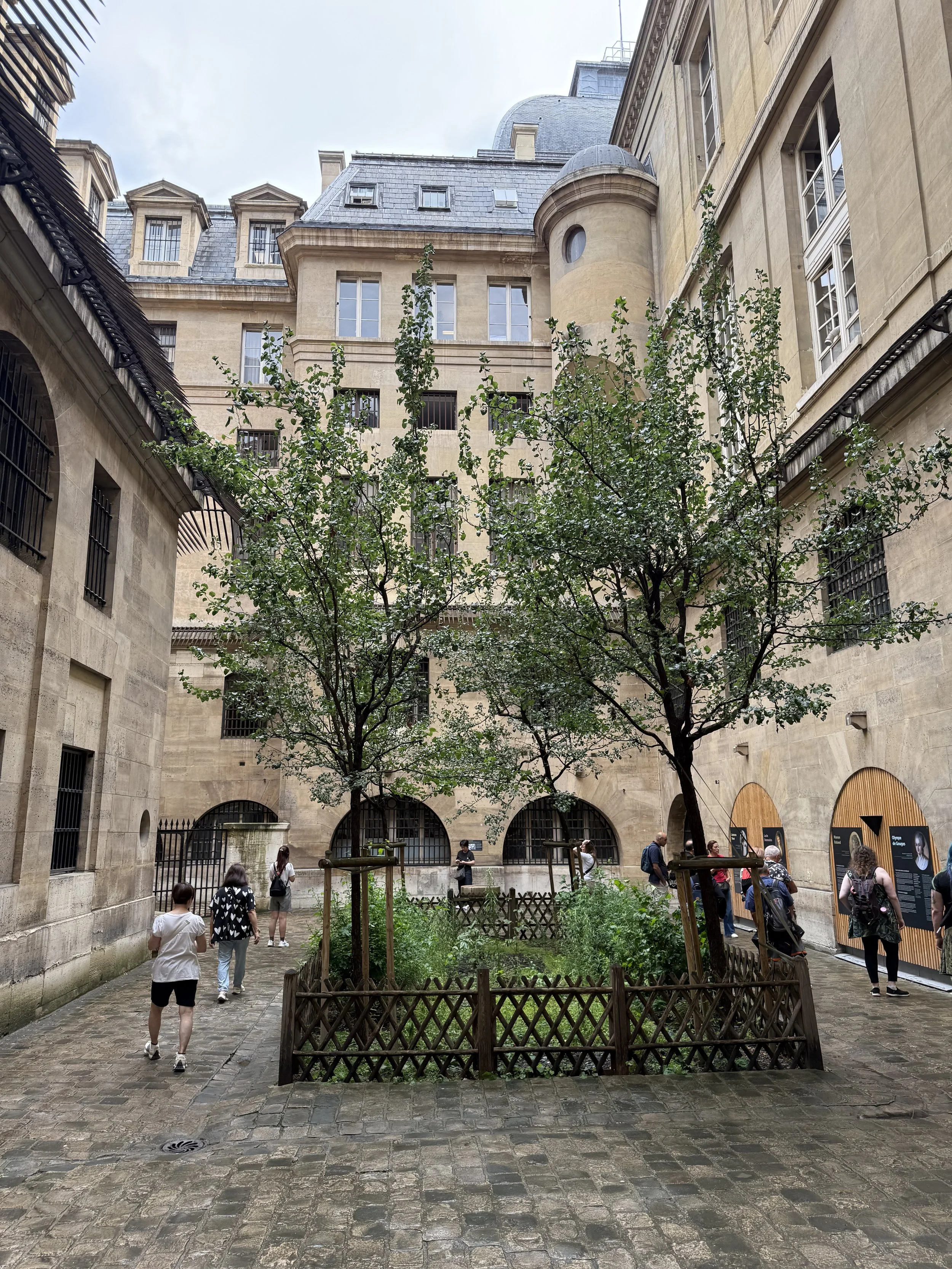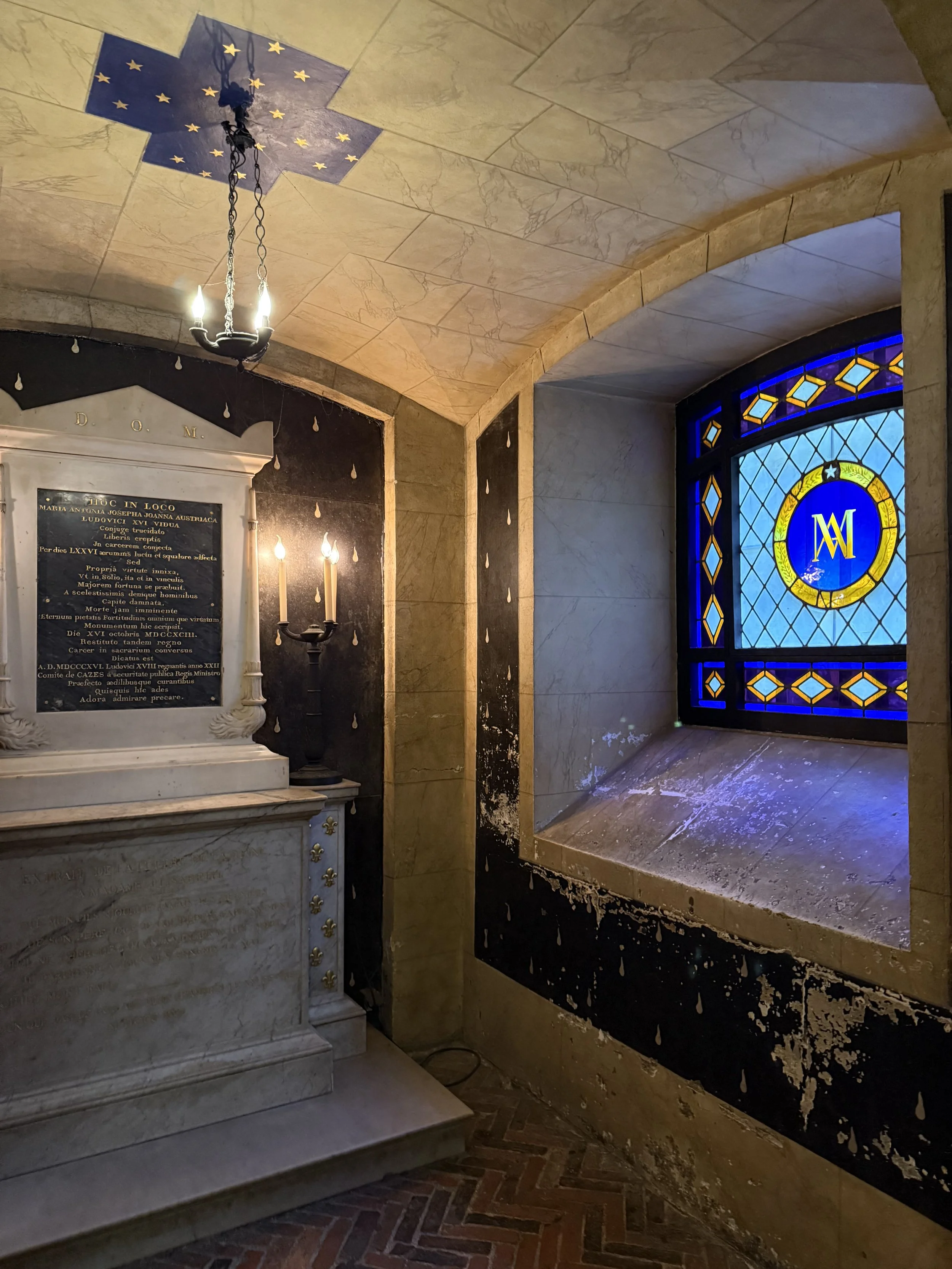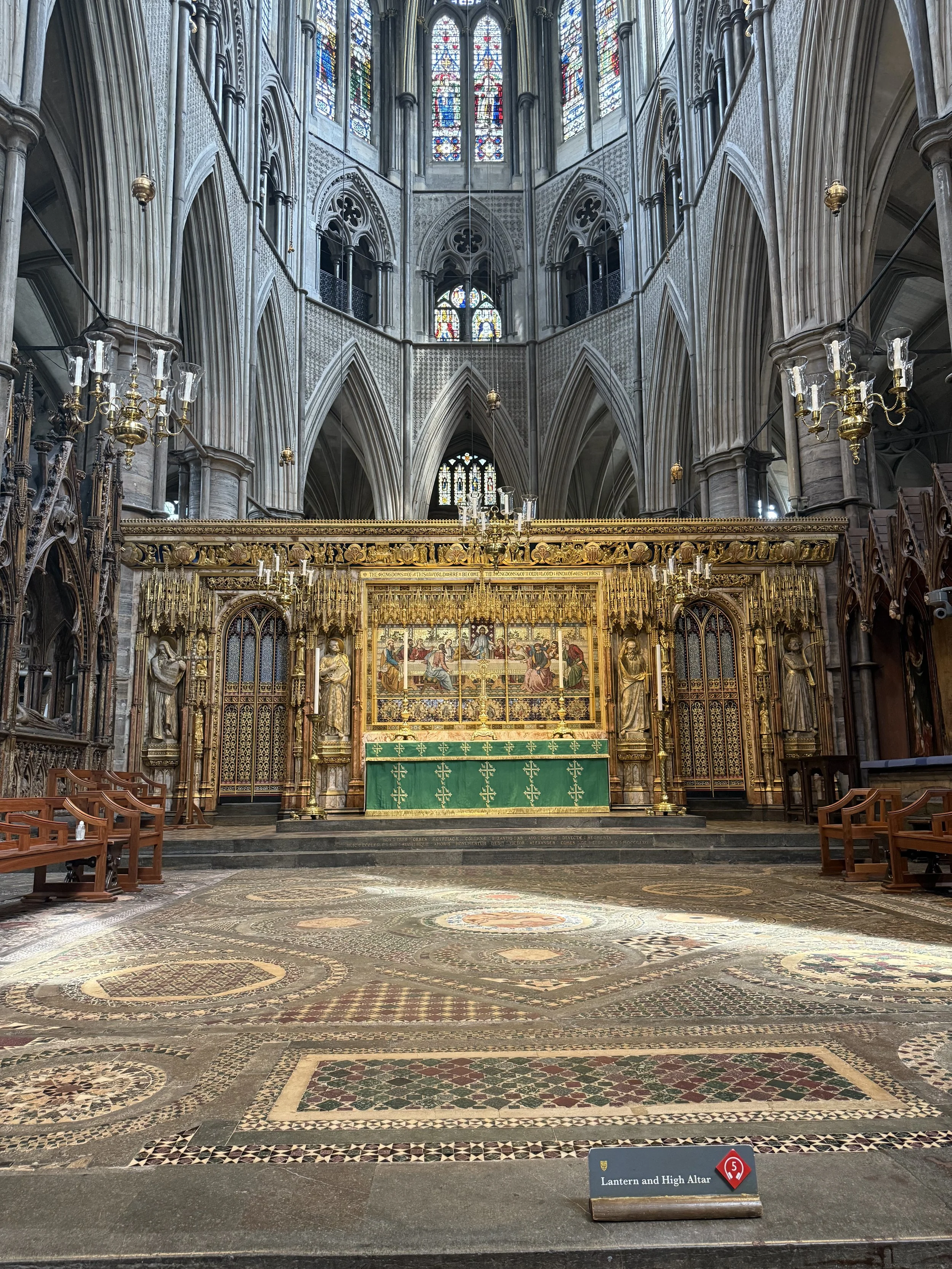Paris refuses to be experienced in one dimension. Every day here feels like stepping into another chapter of history, sometimes illuminated by sunlight on the Seine or hidden in the damp shadows beneath the streets. My trip has been a steady layering of moments: wandering through museums, visiting the opera house, eating delicious food, and exploring places that hold centuries of memory. This layered history and sacrifice mirror the complex social struggles and resilience depicted in Victor Hugo’s Les Misérables—a city where past and present conversations about injustice, identity, and humanity converge.
Paul Sérusier’s painting L’Averse at Musée d’Orsay
At the Musée d’Orsay, surrounded by Impressionist light and the grand sweep of 19th-century art, I was drawn to a quieter piece, a painting of a nun holding an umbrella over her head. It wasn’t a scene of grandeur or public ceremony, just a moment of her everyday life. Yet something about it stayed with me. The umbrella seemed like a small shield against the world, a fragile defense in a life defined by service. I thought about the sacrifices nuns make when dedicating their lives to the church. Whether it be giving up personal freedom, family, or other dreams they left behind.
Though I didn’t visit a convent during my trip, the painting brought to mind the role convents play in Les Misérables. In the novel, the convent offers Valjean and Cosette a quiet sanctuary from violence and chaos. But it is also a place defined by strict structure and restraint. Its walls impose rules and routines that contain its inhabitants within a particular order and silence. This tension between sanctuary and confinement is powerful: a place that protects, but also restricts, shaping safety with limits on freedom and movement.
This duality echoes a larger theme in Les Misérables—the costs and contradictions of seeking refuge. Protection often demands sacrifice, and safety can mean isolation. The painting felt like a visual reminder of this balance and how places designed to shield us can also enclose us. It deepened my understanding of Hugo’s portrayal of sanctuary not as escape from hardship, but as a space where the fight for freedom continues quietly within boundaries.
Doll in a Victorian dress symbolizing South African apartheid, featured in the Soweto ballet, displayed at the Opera.
A few nights later, I visited the Paris Opera. The building itself was grand and lavish, a spectacle that transports visitors far beyond the everyday. Yet amid the opulence, my attention kept returning to one striking costume on display: an elaborate gown on a doll inspired by apartheid-era fashion, reimagined for the stage. The doll’s Victorian dress symbolizes South African apartheid by reflecting how colonial-era European fashion was imposed as a marker of power, control, and racial hierarchy. The heavy history embedded in the gown’s design made me pause and reflect on who is allowed to wear beauty, and under what circumstances.
As I wandered the grand halls, the gown’s powerful symbolism brought to mind Les Misérables and its profound exploration of social injustice, oppression, and the struggle for dignity. Just as this choreography interpreted the conflict in human terms, highlighting the inhumanity of South Africa’s white regime and the people’s strength and resistance expressed through group dances, Hugo’s novel reveals the lives of marginalized people confined by rigid social hierarchies. Both the gown and the novel remind us that beauty, identity, and survival are often shaped by forces beyond individual control—and that resistance can take many forms, whether on the barricades of 19th-century Paris or through cultural expression confronting apartheid’s legacy.
One of my quietest moments in Paris was walking the path of Javert’s final moments in Les Misérables. In the novel, Javert’s solitary walk toward the Seine is laden with inner turmoil; today, the setting is serene. People stroll in pairs, and friends sit along the embankment as light fades. There is a sense of community in a place Hugo painted as lonely. It made me reflect on how places absorb and outlive the stories told about them. The same stretch of riverbank can hold both tragedy and joy, depending on who walks there and when.
Strip along the Seine where Javert had his last moments
Paris is full of layered complexities. In one afternoon, you can stand in a sunlit square and then descend into the darkness of the Catacombs. That was one of the most humbling experiences of my trip. I expected eeriness—and found it—but even more, I felt the vastness. Endless walls of bones stacked neatly, each skull and femur a silent story. It was hard to grasp the weight of history surrounding me, countless lives folded into this space. The arrangement is orderly, yet the reality it represents is messy: centuries of disease, poverty, overpopulation, and the practical need to move the dead from crowded cemeteries. History often hides its most sobering truths out of sight.
The Catacombs were not my only somber stop. At Montparnasse Cemetery, I visited the tomb of Simone de Beauvoir. The grave itself is simple, but flowers and notes left by visitors make it feel alive. Standing there, I thought about how de Beauvoir’s voice still resonates—how fiercely she challenged oppression, and how surely she would have condemned the injustices faced by characters like Fantine. Fantine’s descent into prostitution is not just personal tragedy; it is a social failure and the result of systems that punish women for vulnerabilities they did not choose. I could almost imagine de Beauvoir writing an essay on Fantine, placing her alongside overlooked women of history.
Tomb of Simone de Beauvoir at Montparnasse Cemetery
These moments—in museums, opera houses, along the river, or underground—shaped my experience of Paris into something richer than a checklist of sights. The city feels like a living novel, its chapters scattered across neighborhoods, each telling a unique story. Some are quiet, like the nun’s umbrella. Some are grand, like the opera’s gilded balconies. Some devastating, like the Catacombs. And some quietly defiant, like Simone de Beauvoir’s grave, holding steady against time.
Walking through Paris, I noticed how art, history, and daily life blur into one another. One minute, you can be looking at a centuries-old painting; the next, sipping coffee by the Seine. You can stand where Hugo described scenes in Les Misérables and realize that while the city has changed, the human struggles he wrote about—poverty, injustice, resilience—still find reflections here.
As my trip comes to a close, I keep returning to the idea of sacrifice. Whether the sacrifice of nuns at the convent, the lives lost in the Catacombs, or the fictional sacrifices of characters like Fantine, who gives up everything for her child—these sacrifices carry weight. But Paris has also shown me the flip side: community, beauty, and the ways people protect one another. If Hugo’s Paris was a city of shadows and barricades, today’s Paris is a city of layers. It holds space for joy and grief, for memory and reinvention. And as I pack my bags, I am grateful to have stepped into so many of its chapters, knowing each will follow me long after I leave.

